
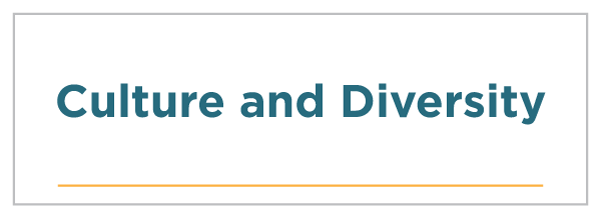 |
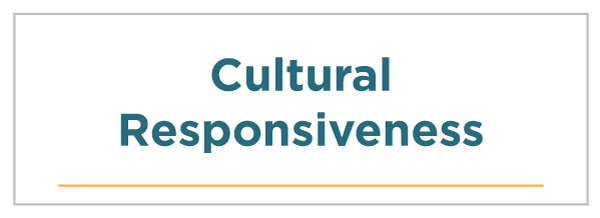 |
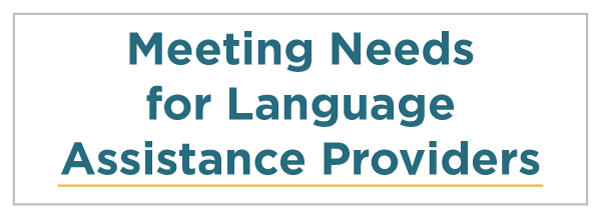 |
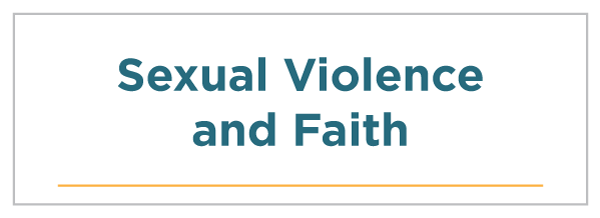 |
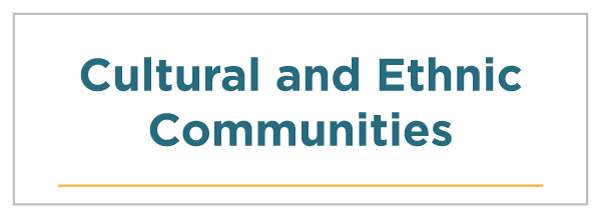 |
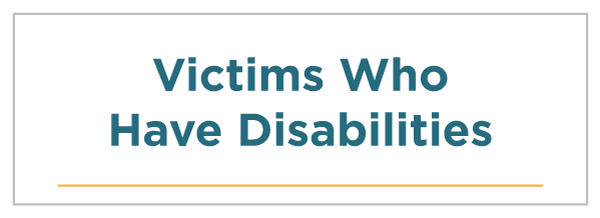 |
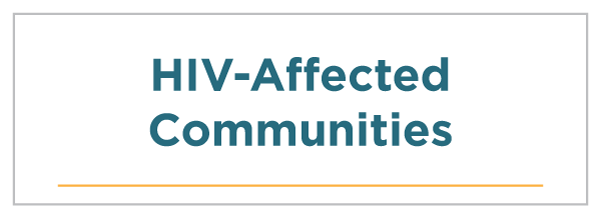 |
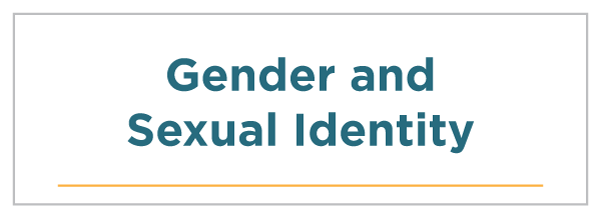 |
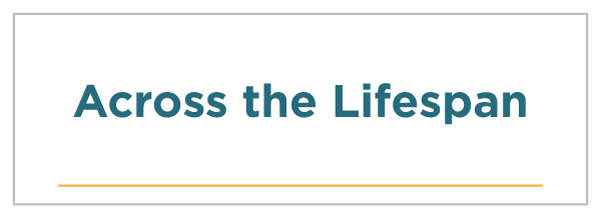 |
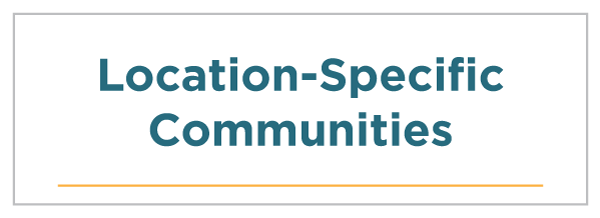 |
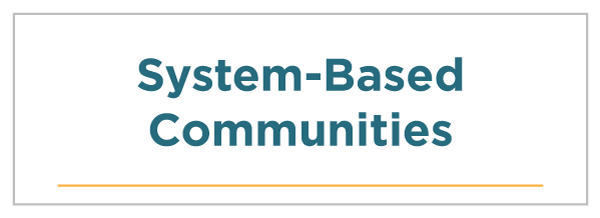 |
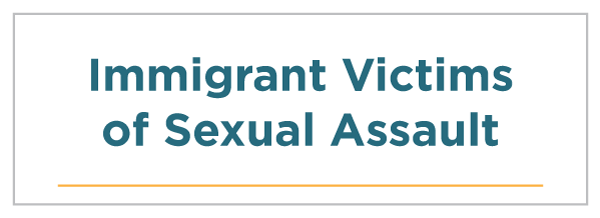 |
Gender and Sexual Identity
“When we’re thinking about addressing the needs of the victims and survivors, it’s really important we do not gender the term victim. The minute you start saying victim, she, victim, she, then you are shutting down a huge group of folks out there — male-identified people, trans and gender non-conforming folks who have sexual violence as part of their experience. When I use language that isolates them from service, they’re saying, ‘Okay, there’s no one out there to support me and systems are not there to support me either. They’re really only there to support someone who would answer to she.’” [177]
Sexual assault is perpetrated against individuals of all genders and with all sexual orientations. This section of the SART Toolkit highlights individuals who identify as LGBTQ. SARTs can read these sections to understand common barriers individuals who identify as LGBTQ might experience.
While these sections of the SART Toolkit are the result of collaborative effort and feedback to highlight some information, we acknowledge this information does not represent everyone who identifies as LGBTQ. We seek to remind service providers and SARTs that gathering information and seeking training is one aspect of increasing or improving services for specific populations, but nothing is a substitute for working with individuals in your community directly to address their concerns. Some of those concerns may be represented in the SART Toolkit, and some might not be.
Service providers who seek to understand the factors that contribute to vulnerability will be better prepared to acknowledge and partner with victims to provide trauma-informed, culturally relevant, victim-centered services.
LGBTQ Victims
People who identify as LGBTQ can be found in all communities and cultures. Although these terms are often used together, they refer to a broad spectrum of sexual orientation (who an individual is attracted to) and gender identity (how an individual describes their gender). It is important to understand the distinction.
Gender identity is how an individual describes their gender. Sexual orientation is how an individual describes who they are attracted to. Sex refers to biology.
Individuals may identify in a variety of ways across the gender spectrum: as men, women, trans feminine, trans masculine, transgender, gender non-conforming, non-binary, genderqueer, etc. Individuals use their own language to describe their sexual orientation or gender identity, and some individuals who are LGBTQ may not identify with the LGBTQ community.
For more information, see the glossary of terms compiled by the New York City Anti-Violence Project. [178]
People who identify as LGBTQ experience sexual assault at higher rates than the general population. Lesbian and bisexual women may be up to three times as likely as heterosexual women to report having been sexually assaulted in their lifetime. [179] Gay men may be up to 15 times more likely than heterosexual men to have been sexually assaulted during their lifetime. [180]
Individuals who identify as LGBTQ, particularly youth, are at an increased risk for sex trafficking. [181] In a study of 268 LGBT respondents, 6 percent had been sexually assaulted because of their sexual orientation, gender identity, or gender presentation. [182] Sexual assault can be an element of anti-LGBTQ hate violence or hate crimes. [183]
The higher rates of poverty and discrimination faced by LGBTQ individuals contribute to their higher rates of sexual assault by putting them at greater risk. [184], [185] Poverty and job discrimination can compel some transgender persons to engage in transactional sex, including survival sex, which may increase their risk of sexual victimization. [186]
SARTs have an important opportunity to support LGBTQ victims. SART agencies may have varying training, commitment, institutional bias, staff, or policies regarding providing support for LGBTQ victims. This makes it important for teams to work together to increase awareness of the high risk and prevalence of sexual assault among LGBTQ individuals and to address any inconsistencies in response.
Many people who identify as LGBTQ encounter discrimination or have unsatisfactory experiences with service providers. [187] Current research demonstrates that LGBTQ victims receive more comprehensive services at anti-violence programs, as opposed to community-based rape crisis centers, in responding to crimes against LGBTQ people. [188] SARTs should seek out opportunities to connect with organizations that serve people who identify as LGBTQ.
LGBTQ-sensitive services are essential to serve the needs of sexual assault victims from LGBTQ communities. According to the National Coalition of Anti-Violence Programs (NCAVP) Training and Technical Assistance Center, “Without appropriate services, survivors are left with fewer options to receive the support to heal, safety plan, obtain legal remedies and meet basic needs after experiencing sexual violence. Given these bleak statistics, culturally appropriate services for LGBTQ survivors are critically necessary to ensure that sexual violence organizations can support some of the most marginalized survivors.” [189]
SARTs, already dedicated to improving services for victims among key service providers, have an opportunity to partner with LGBTQ individuals and communities to address barriers and provide victim-centered services. The National Center for Victims of Crime and the NCAVP recommend “collaboration building between LGBTQ anti-violence programs and mainstream victim programs to increase the availability of culturally relevant services for LGBTQ victims of crime by providing LGBTQ specific training for criminal and civil justice system personnel and victim assistance providers.” [190]
An Overview of Terminology:
Providing responsive services to the LGBTQ+ community in the United States and culturally specific communities, which may have a more or less rigid perception of gender and sexuality, will include an understanding of terminology that individuals use to describe themselves beyond the overview provided below.
Best practice is to ask individuals their pronouns, how they identify, and any questions necessary to fulfill your role in providing safe, supportive services to victims.
These general terms are used to describe sexual orientation:
- Asexual: A term referring to individuals with low or absent interest in or desire for sexual activity.
- Bisexual: A term referring to individuals who have a strong emotional, affectional, and sexual attraction to people from varying gender expressions.
- Gay: A term referring to individuals who identify as male who have a strong emotional, affectional, and sexual attraction to a person who identifies as male may use this term to describe themselves. Individuals who identify as women who are attracted to women may also use this term to define themselves.
- Lesbian: A term referring to individuals who identify as women who have a strong emotional, affectional, and sexual attraction to a person who identifies as a woman may use this term to describe themselves.
Terms used to describe gender identity:
Gender expression is how someone chooses to present themselves; that expression can be feminine, masculine, androgynous, or anywhere in between.
- Transgender: An umbrella term that includes many transgender identities, including how someone perceives or expresses their gender. Transgender is a term that refers to someone whose gender identity is different than the sex they were assigned at birth.
- Cisgender: A term referring to individuals who identify with the gender assigned at birth.
- Queer or Questioning: This term may be used by individuals who have decided there is no label they choose to describe their emotional, affectional, and sexual attraction. It can also mean questioning for a person who is figuring out their sexual orientation or gender identity.
- + is sometimes used to encompass a variety of sexual orientations. In this toolkit, the use of the term LGBTQ is specifically intended to include all individuals and all identities on the gender or sexual orientation spectrum. It is always best practice for service providers to ask and use the language of individuals they are serving.
For more information, see the glossary of terms compiled by NCAVP at the Training and Technical Assistance Center website.
This section of the SART Toolkit covers the following:
- Barriers Specific to LGBTQ Individuals
- Working with LBTQ Victims
- Collaboration with LGBTQ Anti-Violence Organizations
- Hate Violence (Hate Crimes)
- Language of Gender and Sexuality
- Gender and Sexuality Resources
Barriers Specific to LGBTQ Individuals
Sexual assault victims who identify as LGBTQ may be reluctant to report their victimization or seek services due to concerns about discrimination. Eighty-five percent of victim advocates surveyed by the National Coalition of Anti-Violence Projects reported having worked with an LGBTQ victim who was denied services because of their sexual orientation or gender identity.” [191]
In addition to the barriers all victims of sexual assault experience, victims who identify as LGBTQ face unique problems in reporting, such as being forced to come out or share their sexual orientation or gender identity as part of an accurate police report or medical record. Coming out as LGBTQ could lead to discrimination from service providers and abandonment by friends or family.
People who identify as LGBTQ often do not report their experiences of sexual assault due to a fear of judgment and violence. Isolation and lack of appropriate services can further silence victims who identify as LGBTQ and as people of color, immigrants, or as having a disability. Individuals who identify as being from more than one marginalized community regularly experience multiple layers of discrimination and oppression.
Barriers to reporting include the following:
- A culture that is homophobic, transphobic, or biphobic.
- Internalized homophobia or transphobia is a barrier to asking for help because it creates a fear of being seen as a member of a denigrated community. It can create anxiety, self-hatred, depression, and isolation.
- Individuals may fear being “outed.” Disclosing the identity of the offender might be tantamount to a disclosure of being LGBTQ. Fear of being asked and not being able to say you are not from these communities silences many victims from coming forward if they cannot be out and safe in their communities.
- Victims may fear being judged or not believed. Society reinforces this fear through continued discrimination, which is then layered with the fear of not being believed that many victims of sexual assault face.
- Victims who identify as LGBTQ may not see themselves represented in the agency providing services to victims of sexual assault.
- Services do not match an individual’s needs in their setting of choice.
- Agencies may not have a staff that understands the specific needs of these communities. This can include a lack of understanding how an individual from these communities may experience multiple layers of oppression.
- Victims may have a fear of betraying their community or reinforcing stereotypes. Many stereotypes of the LGBTQ communities are that they are “bad” people or they prey on children. In admitting to a sexual assault, a victim may fear that these stereotypes will be reinforced. Naming another individual from the LGBTQ community as an offender may feel like a betrayal of the community.
- There may be a lack of understanding of sexual assault within LGBTQ communities, making it difficult for individuals to understand and identify their needs as a victim of sexual assault.
Working with LGBTQ Survivors
SARTs should follow the best practice recommendations when working directly with individuals who identify as LGBTQ. These best practices, include, but are not limited to, the following: [192]
- Ask the individual for their preferred pronouns and use the pronouns or terms the victim uses. It is important not to make assumptions.
- Ask victims what pronouns they would like used in reports or documentation as some victims may prefer their gender identity be private.
- Refer to the individual by their preferred pronoun at all times, including in documentation and during conversations with other service providers.
- Update intake forms or other documents that ask about gender.
- Include a write-in option.
- Include transgender and intersex options.
- Treat the individual’s LGBTQ status as confidential.
- Document any anti-LGBTQ statements the victim says were made during the assault.
- Refer transgender victims to individuals or agencies that have significant experience with meeting the needs of transgender individuals.
- Include opportunities for LGBTQ individuals to participate in the SART and protocol development.
- Ensure medical providers are aware of the recommendations and specific medical concerns for trans individuals included in the National Protocol for Sexual Assault Medical Forensic Examination Adults/Adolescents.
Below are some key considerations for SART members aiming to enhance services to LGBTQ individuals:
- A victim may take time to disclose their identity as LGBTQ. Before disclosing their identity or a sexual assault, individuals may want to build a relationship with service providers to determine if the organization is a safe place to share that information.
- Recognize increased impact. Victims may feel the crime is punishment for their sexual orientation or gender identity. These fears may further affect the victim while they are already dealing with the impact of sexual assault. If service providers suspect this may be a dynamic for any victim, they should allow the victim time to feel safe and comfortable disclosing these issues.
- Understand the needs of HIV-affected communities. Individuals who are sexually assaulted may be living with an HIV infection at the time of the assault or may be concerned with HIV infection or at risk of HIV infection from exposure by the assailant. Although the risk of infection from various types of intercourse is low, [193] service providers must be prepared to provide support to victims by sharing accurate information about their medical care, the risks, and available support services.
- Identify peer-to-peer support programs. In addition to using a traditional approach to trauma treatment, identify client-centered peer counseling that can help address the social, political, and economic contexts of difficulties an LGBTQ victim might encounter. Ensure any peer-to-peer programs are appropriate, safe, and confidential.
Collaboration with LGBTQ Anti-Violence Organizations
SARTs can enhance service provision by identifying and partnering with LGBTQ anti-violence programs in their communities to develop or enhance relationships. These partnerships can increase LGBTQ-specific competency and sensitivity in mainstream responders and providers, thus enhancing an essential link between victims and the criminal justice system. [194]
Partnerships can lead to conducting community needs assessments to identify gaps in services to LGBTQ victims. SARTs can develop mechanisms for outreach, provide or recommend trainings, develop or review protocols, conduct case reviews (with informed and timely consent from victims), and partner with collaborating groups. Actions that can result from these partnerships include increased cross-training, public awareness, outreach, and prosecution.
SARTs can enhance services to victims from a systemic perspective. SARTs can conduct evaluations, including data collection, to create a foundation on which to base effective policies and then measure positive change in meeting the needs of LGBTQ victims. [195]
SARTs can implement the following steps to enhance relationships with LGBTQ communities and develop partnerships:
- Build an LGBTQ-victim-friendly SART. Members should demonstrate their commitment to provide the best possible services to all victims regardless of gender identity and sexual orientation. SARTs can include statements in their MOUs, protocols, mission statements, or position statements that explicitly state all victims have access to services, including people who identify as LGBTQ. SART service providers should consider hanging posters or materials in their offices that indicate they are LGBTQ-friendly, and recruit staff, board members, and volunteers who identify as LGBTQ.
- Ensure agency policies support LGBTQ staff, board, and volunteers.
- Incorporate questions into interviews about the way potential staff would serve the needs of those from LGBTQ communities.
- Incorporate trainings with staff, board, and volunteers on understanding and working with individuals from these communities.
- Train supervisors to support staff around language use, questions, and ongoing check-ins related to supporting victims who identify as LGBTQ.
- Encourage individuals who identify as LGBTQ to express themselves in the office.
- Provide training to staff so they do not explicitly or inadvertently engage in behavior that is unsafe to LGBTQ individuals.
- Support LGBTQ staff if they experience harassment in the office.
- Organizations can provide staff a safe place to go if they feel harassed, by making the reporting systems clear and including timely follow-up and an appropriate response.
- Organizations can include LGBTQ-specific information in their health plans.
- Develop relationships. SART members can invite LGBTQ organizations or groups to join the SART and develop meaningful relationships with organizations in the surrounding community who serve the LGBTQ community.
- Meet with these organizations and find common ground to support each other in the mission to end gender-based violence.
- Listen to these organizations express their needs and the realities their members face in the community. This can be done with listening sessions, focus groups, or involvement in a community needs assessment.
- Provide support for LGBTQ efforts in ending discrimination and creating a safer community-at-large for individuals from these communities.
- Spend time with LGBTQ groups and listen. This is key in fostering a lasting relationship: one that is not predicated on the crime of sexual assault alone.
- Cross-train each organization on issues faced by all agencies.
- Invite LGBTQ individuals and groups to SART meetings even if they are not members of the team.
- Invite these organizations to other community meetings.
- Consider supporting awareness events and activities within the LGBTQ community or at local Pride events.
- Establish a cross-generational understanding from members of LGBTQ communities.
- Hopes, dreams, goals, challenges, and barriers vary across the generations and change with time.
- Remember that people who identify as LGBTQ are all different. Invest in finding members from various races, cultures, religious beliefs, classes, and ages from these communities to have a voice in your agency as well as support them in their needs. This may mean that these individuals are not part of the mainstream LGBTQ organizations.
- Build supportive policies that enable service providers to meet victims where they are.
- Meet victims in settings where they feel safe.
- Talk to victims in the terms they use to identify themselves, and do not label them. These terms may change over time. Use gender-inclusive terms such as “they” and do not assume someone is in a relationship with a member of the opposite sex.
- Be fluid in your services and change according to each individual and the needs expressed by the community and identified by the SART.
- Identify appropriate services. It is critical to understand and then provide age-appropriate and culturally relevant care for lesbian, gay, bisexual, transgender, and queer individuals. See the section on working with individual victims who identify as LGBTQ.
Hate Violence (Hate Crimes)
Acts of sexual assault may be the mechanism for carrying out hate violence against a particular group of individuals, often based on sexual orientation, gender identify, or other demographic factors, such as race. Experiences of violence vary even within marginalized communities; for example, transgender women of color experience a national crisis of deadly violence. In 2014, at least 12 transgender people of color were killed. [196] In 2015, 24 hate violence-related homicides were committed or reported as such; 54 percent of the victims were transgender women of color. [197]
Hate violence is a spectrum of violence that individuals perpetrate against others based on hate. Hate crimes or bias crimes are specific violations of the criminal code, although not all acts of hate violence meet the legal standard for a crime or the additional legal specificity of a hate crime. Hate crimes may be difficult to identify, as it is the motivation of the offender, not the action, that defines a hate crime. Hate crimes are also distinct as they send a violent message to entire communities that they are not safe.
SARTs should be prepared to recognize the possibility of a hate crime and conduct investigations to this effect, when appropriate. SARTs should be aware of all tribal, local, state, and national laws related to LGBTQ individuals and hate crimes.
Accurately investigating and reporting hate crimes is one area where SARTs can provide direct input into systematic changes. Accurately reporting crimes provides data to decision-makers and funders. Routinely underreporting crimes does not present an accurate picture, leaving marginalized communities with few or no options. For example, the FBI Uniform Crime Reporting program collects data from law enforcement agencies, and many report that zero hate crimes occurred despite research showing some of those law enforcement agencies investigated one or more crimes that could have been reported. [198] This data may reflect bias in investigation or bias in reporting.
SART members or victims can report acts of violence against LGBTQ or HIV-affected individuals. Either way, SARTs can review existing data to understand if hate crimes are occurring, being reported by victims, being investigated by law enforcement, and being reported by law enforcement to national surveys.
Hate Violence Resources
Hate and Bias-Motivated Crimes: Sexual Violence and Individuals Who Identify as LGBTQ (PDF, 8 pages)
The political, social, and cultural environment of homophobia in U.S. culture contributes to violence against people who identify as, or are identified as, LGBTQ.
Hate Crimes and Violence Against Lesbian, Gay, Bisexual and Transgender People (PDF, 24 pages)
The Human Rights Campaign presents an overview of research about LGBTQ hate crimes and discusses best reporting practices for law enforcement agencies.
Lesbian, Gay, Bisexual, Transgender, Queer, and HIV-Affected Hate Violence 2016 (PDF, 89 pages)
The National Coalition of Anti-Violence Programs writes a yearly report documenting the instances of violence reported against LGBTQ and HIV-affected communities, including information trends and the public policy landscape.
Report Acts of Anti-LGBTQ violence
The Anti-Violence Project offers a self-reporting option to report instances of violence, regardless of if they have or have not been reported to law enforcement. This information is used to help identify trends in violence that impact LGBTQ and HIV-affected communities to better understand the scope and impact of hate violence.
Language of Gender and Sexuality
Words have an impact on people, both those who are speaking and those who are listening. Words, in protocols and language, are not just a matter of political correctness. To provide victim-centered services and take accurate documentation, service providers must ask about and respect the language used by victims.
Service providers demonstrate respect and openness to clients by asking questions with gender-neutral language and listening to and using the same language as the victim. For example, saying “partner,” “significant other,” or “spouse” instead of “boyfriend/girlfriend” or “husband/wife” can help convey respect and openness to victims who are not in heterosexual relationships. It is also helpful to use gender-neutral pronouns when discussing the offender and not assume that because the victim identifies as LGBTQ that the offender was someone of the same gender. Using gender-neutral language, such as “they” and “their” rather than he/she, helps to create a community that is free from bias and assumptions about sexual orientation and gender identity. [199]
Not all victims use the same language to describe their sexual orientation or gender identity. Those who are LGBTQ may not identify with the LGBTQ community. For instance, the terms “gay” and “lesbian” are not always preferred by LGBTQ communities of color, since there is a strong image of the gay and lesbian movement being a white, middle-class political movement. Some people dislike the term “homosexual” because of its history of being a psychological or medical classification of a mental disorder (this classification was changed in 1974, and same-sex attraction is no longer considered a mental illness). Some people prefer not to apply labels to themselves at all.
In the spirit of meeting people where they are and practicing person-centered services, advocates can ask individuals about the language and terminology they prefer to use to describe their own experiences.
Gender and Sexuality Resources
Gender Neutral Pronouns (PDF, 1 page)
This chart from FORGE provides conjugations of female, male, and various gender-neutral pronouns.
The Gender Tag: Authentic Gender Expression (multimedia, 16:01)
In this TED talk, Ashely Wylde deconstructs gender.
This research translation summarizes a national CDC survey from 2015 on sexual identity and health-related behaviors of high school students. The report found that students who identify as gay, lesbian, or bisexual face significant health disparities.
Serving Those Most at Risk: Embracing the Challenge of Serving Trans Youth (webinar, 90 minutes)
This webinar by the Midwest Regional Children’s Advocacy Center discusses the challenges and barriers faced by trans youth and best practices for serving them.
Sexual Minority Youth Data Infographics
These infographics from the CDC present data about lesbian, gay, and bisexual youth.
Talking About Gender and Sexuality Sexual Violence and Individuals Who Identify as LGBTQ (PDF, 12 pages)
The Pennsylvania Coalition Against Rape (PCAR) explores the way language influences our ability to serve individuals who identify as LGBTQ.
Violence and LGBTQ+ Communities: What Do We Know, and What Do We Need to Know? (PDF, 56 pages)
This 2017 report by Violence and Victimization Research Program Center for Justice, Safety and Resilience RTI International highlights ways people who identify as LGBTQ face violence in their daily lives.
Response to LGBTQ Victims Resources
The Impact on Individuals and Communities: Sexual Violence and Individuals who Identify as LGBTQ (PDF, 20 pages)
This guide by the National Sexual Violence Resource Center (NSVRC) provides information to community-based sexual violence program staff on responding to sexual assault against individuals who identify as LGBTQ.
Intimate Partner Violence and Sexual Abuse Among LGBT People: A Review of Existing Research (PDF, 23 pages)
This November 2015 report by the Williams Institute of the University of California School of Law provides an overview of existing research on intimate partner violence and sexual abuse (IPSA) among LGBT people and makes recommendations for future research.
Talking about Gender and Sexuality: Sexual Violence and Individuals who Identify as LGBTQ (PDF, 12 pages)
This guide by NSVRC defines critical concepts of sex, gender, sexual orientation, and gender identity, intending to educate others on language and create a safe and inclusive environment.
Tips for Allies of Transgender People
GLAAD provides an overview of common questions with clear answers on how to be an ally to transgender people.
Services for LGBTQ Victims Resources
Breaking the Barriers: Improving Services for LGBTQ Human Trafficking Victims (PDF, 20 pages)
This guide by Polaris includes a top-10 list of ways to break barriers to services for victims of human trafficking who identify as LGBTQ.
Connections, Volume XIII (PDF, 28 pages)
This winter 2010 newsletter from the Washington Coalition of Sexual Assault Programs explores creating safer spaces for LGBTQ individuals.
Responding to Transgender Victims of Sexual Assault
Transgender victims of sexual assault, like all crime victims, want and deserve to be respected, heard, believed, served, and supported. This user-friendly 2014 guide from the Office for Victims of Crime (OVC) offers practical tools to promote understanding and support of transgender victims, whether you are a health care provider, law enforcement officer, emergency medical personnel, advocate, therapist, or support group facilitator.
This resource by FORGE discusses the silence of many LGBTQ advocates about services for men, arguing that GBT male victims are relatively unwelcome or invisible in anti-sexual violence centers. The article provides recommendations that agencies can follow to become more inclusive.
Victim-Centered Care — LGBT Victims
These guidelines by SAFEta provide guidance for sexual assault forensic examiners to provide victim-centered care to LGBT victims.
Policy, Practice, and Protocol Resources
From Policy to Practice: Nondiscrimination and Inclusion of LGBTQ Individuals in Victim Services Programs (PDF, 29 pages)
This 2014 booklet, by the National Coalition of Anti-Violence Programs, provides a basic understanding of policies and practices that promote nondiscrimination and inclusion of LGBTQ individuals.
Model Policies (PDF, 13 pages)
This guide from the Virginia Anti-Violence Project is intended to assist sexual and domestic violence direct service organizations in Virginia that wish to better serve LGBTQ victims of violence.
National Protocol for Sexual Assault Medical Forensic Examination Adults/Adolescents (PDF, 144 pages)
This protocol by the DOJ Office on Violence Against Women (OVW) establishes protocols and recommendations for sexual assault medical forensic exams.
SAFE Protocol: Trans-Specific Annotation (PDF, 4 pages)
This handout is a reference of guidelines specific for serving transgender victims from the National Protocol for Sexual Assault Medical Forensic Examinations (SAFE Protocol).
LGBTQ People of Color Resources
Hispanic LGBT Older Adult Needs Assessment (PDF, 48 pages)
This National Hispanic Council on Aging research project and report is designed to better understand the experiences of aging and socio-economic and health challenges facing the LGBT Hispanic older adult community.
Responding to the Needs of LGBTQ People of Color (PDF, 2 pages)
This guide developed by the Virginia Anti-Violence Project and Southerners on New Ground is designed to help providers be more informed about the nuanced and complex realities of LGBTQ people of color. It is intended for service providers to use when working to reach LGBTQ people and communities of color who are experiencing violence in their lives. It is not a one-size-fits-all guide, but rather a tool that aims to provide context as well as action steps for reaching these communities.
Tribal Equity Toolkit: Tribal Resolutions and Codes to Support Two Spirit and LGBT Justice in Indian Country (PDF, 121 pages)
This toolkit is designed for tribal lawmakers and committees, staff, and community members to assist in drafting and enacting tribal laws. This toolkit is developed by a collaboration of the Native American Program of Legal Aid Services of Oregon, the Indigenous Ways of Knowing Program at Lewis and Clark Graduate School of Education and Counseling, the Western States Center, the Pride Foundation, and Basic Rights Oregon.
Resources for LGBTQ Victims
Hope for Healing (PDF, 100 pages)
This guide for LGBT victims of crime focuses on hate crimes, sexual assault, and domestic violence.
Information for Survivors of Sexual Assault in the Lesbian, Gay, Bisexual, Transgender, and Queer Community (PDF, 2 pages)
This brochure from the Gay and Lesbian Center defines sexual assault, provides advice on what to do if you have been sexually assaulted, and explains victims’ rights.
Lesbian Sexual Assault, Rape, and LGBTQ Domestic Violence
This page lists information, resources, and hotlines for LGBTQ victims of intimate partner violence (IPV) and sexual assault.
Southern Arizona AIDS Foundation Anti-Violence Project
This project provides free and confidential 24-hour crisis intervention, information, support, referrals, emergency shelter, and advocacy to LGBTQ victims and survivors of violence.
Survivor Handbook (PDF, 8 pages)
This booklet from the Virginia Anti-Violence Project helps LGBTQ people who are experiencing or have experienced violence in their lives, as well as their friends and family, to better understand what is happening and how it impacts them.
Women Empowered Against Violence
WEAVE addresses the legal needs of LGBTQ victims of domestic violence, sexual assault, dating violence, and stalking through its LGBTQ program.
Transgender Resources
Beyond the Gender Binary TED Talk (video, 10:43)
In this TED Talk, Yee Won Chong discusses the differences between gender identity, gender expression, and sexual orientation, plus tips on how to be an ally to trans individuals.
Responding to Transgender Victims of Sexual Assault
Transgender victims of sexual assault, like all crime victims, want and deserve to be respected, heard, believed, served, and supported. This user-friendly guide from the Office for Victims of Crime (OVC) offers practical tools to promote understanding and support of transgender victims, whether you are a health care provider, law enforcement officer, emergency medical personnel, advocate, therapist, or support group facilitator.
Serving Transgender Survivors of Sexual Violence (PDF, 4 pages)
This Technical Assistance Bulletin lists the lack of services available and the barriers for transgender victims of sexual assault and explains what advocates need to know and how they can help.
Transgender Rates of Violence (PDF, 2 pages)
This fact sheet from FORGE discusses prevalence of sexual violence against people who are transgender and the limitation of studies on this topic.
LGBTQ Technical Assistance Providers
Colorado Anti-Violence Program
This program provides technical assistance, training, and education to community organizations, law enforcement, and mainstream service providers on violence issues affecting the LGBTQ community.
Community United Against Violence
Community United Against Violence works to end violence against and within LGBTQ communities. It offers a 24-hour confidential and multilingual crisis line, free counseling, legal advocacy, and emergency assistance to survivors of hate crimes and domestic violence.
FORGE (For Ourselves: Reworking Gender Expression)
FORGE serves victims of sexual assault and their service providers through the Transgender Sexual Violence Project.
Gay and Lesbian Advocates and Defenders
Gay and Lesbian Advocates and Defenders organization is dedicated to ending discrimination based on sexual orientation, HIV status, and gender identity and expression.
GLAAD rewrites the script for LGBTQ acceptance. As a dynamic media force, GLAAD tackles tough issues to shape the narrative and provoke dialogue that leads to cultural change.
National Center for Transgender Equality
The National Center for Transgender Equality is the nation’s leading social justice advocacy organization, winning life-saving change for transgender people.
National Coalition of Anti-Violence Programs
The NCAVP coordinates the National Training and Technical Assistance Center on LGBTQ Cultural Competency. This project works with mainstream organizations across the country to increase LGBTQ accessibility.
This task force trains activists, organizes broad-based campaigns to defeat anti-LGBTQ referenda and advance pro-LGBTQ legislation, and provides research and policy analysis.
This organization addresses battering in lesbian, bisexual women, and transgender communities. It focuses on community organizing, education, support services, and coalition building with other movements for social change and social justice.
New York City Anti-Violence Project
AVP’s mission is to empower LGBTQ and HIV-affected communities and allies to end all forms of violence through organizing and education, and support victims through counseling and advocacy.
The Northwest Network of Bi, Trans, Lesbian and Gay Survivors of Abuse
This network increases communities' abilities to support the self-determination and safety of LGBTQ survivors of abuse through education, organizing, and advocacy.
Polaris works on all forms of human trafficking and serves victims of slavery and human trafficking, including resources specific to LGBTQ human trafficking victims.
Male Victims
Anyone, including men and boys, can be a victim of sexual assault. “Male” can refer to a wide group of individuals, including transgender men, boys, adult men, gay and bisexual men, men in institutional settings, and men in later life, as well as men from different religious backgrounds, classes, races, and ethnicities.
Research suggests that significant percentages of men and boys have experienced some form of sexual victimization, including rape, being made to penetrate someone else, sexual coercion, or unwanted sexual contact. [200] For example, the National Intimate Partner and Sexual Violence Survey (NISVS) found that one in five male respondents had experienced sexual violence, such as attempted or completed rape, unwanted sexual contact, or sexual coercion, at some point in their lives. [201] Another study of university students found that more than one-fourth of male respondents had experienced sexual victimization. [202]
Often there is an assumption that males are the sole perpetrators of sexual assault or are capable of preventing their own sexual victimization, which can make it more difficult to discuss or respond to male victims of sexual assault. [203] While there continues to be a shift in these attitudes (including additional training and offering services for male victims of all ages), service providers and organizations need to analyze laws, protocols, and policies to ensure that they can respond effectively to sexual assault victims who are male.
While any man, boy, or masculine-identified individual can be a victim of sexual assault, some populations experience higher rates of sexual victimization. Men of color, [204] men who have sex
with men, [205] HIV positive men, [206] men in the military, [207] transgender men, [208] and male youth with disabilities [209] report higher rates of sexual victimization than the general population.
All male victims deserve an empathetic, informed response from professionals. To this end, systems should be knowledgeable about the unique barriers encountered by male victims. A comprehensive, system-wide approach is essential to support men who report crimes of sexual assault. Male victims should be able to access appropriate medical assistance, unbiased emotional support, and a responsive criminal justice system including investigation and prosecution.
Barriers to Reporting for Male Victims
SARTs can enhance their outreach to and services for male victims of sexual assault by understanding barriers men may face when seeking services and reporting. One study of adult male victims of sexual assault found that only 17.6 percent had spoken to a counselor, sought help from a medical doctor, or called a sexual assault hotline after their victimization. [210] Another study of male sexual assault victims found that only 29 percent of respondents sought mental health counseling after the assault, only 5 percent sought medical care, and only 12 percent reported the assault to police. [211] Yet another study found that only 15.4 percent of male sexual assault victims sought counseling. [212]
Men and boys who experience sexual victimization may encounter a number of barriers due to social attitudes and service provider limitations, including these: [213]
- Not knowing that what they experienced is sexual assault. Many damaging ideas prevalent in American culture make it difficult to identify sexual assault of male victims. Men have the right to decide with whom, when, and in what manner they engage in sexual activity. Men of all ages have the right to say no to anyone, of any gender, of any age, of any social standing, no matter what the potential partner looks like. Myths that promote victim blaming of male victims or downplay the seriousness of sexual assault of men by female or male perpetrators contribute to shame and silence surrounding male victimization. [214] Lack of consent is the critical component in sexual assault.
- Misunderstandings about physical responses to rape. Consent has no connection to body responses. A man can have an erection or ejaculate during a sexual assault. [215] The physical response does not imply consent.
- Fear of not being believed. Males who are sexually assaulted may worry that they will not be believed when they disclose or report. [216] This concern could include service providers, family members, friends, peers, or co-workers. Men face isolation from support networks that do not believe them or judge them based on circumstances of the assault.
- Being perceived as “weak.” Many victims, particularly men, believe they were chosen as a target because there is something wrong with them, typically a perceived weakness that makes them more vulnerable to assault.
- Retaliation. A male victim may fear retaliation or victimization if he discloses or reports the assault, especially if the perpetrator occupies a position of authority over him or if he lives in an institutional setting. [217]
- Feelings of shame. Male victims may also feel powerless, worthless, or emasculated in the wake of sexual victimization, due in part to social constructs of masculinity that equate manhood with power, dominance, and invulnerability. [218] SARTs should recognize these social constructs, dispel stereotypes of masculinity among victims, and empower victims who struggle with these feelings.
- “Real rape” and “real victim” stereotypes. Service providers may see rape only as a crime that uses physical force and results in physical injury. [219] In fact, prior to 2012, the FBI’s definition for rape in the annual Uniform Crime Report did not include sexual assault of males. [220] These entrenched perceptions may result in doubting reports of sexual assault by males that meet the legal statute but do not fit common stereotypes.
- Homophobia and transphobia. Men who experienced a male-on-male rape may question their own sexuality or fear victim-blaming from support systems. Sexual assault is primarily an assaultive, rather than a sexual act, resulting from misuse of power or a betrayal of trust. Male victims may worry that service providers will make assumptions about their sexual orientation. Sexual victimization does not change an individual’s sexuality. Additionally, gay, bisexual, queer, and transgender victims may anticipate homophobic and transphobic responses from service providers.
- Language and word choice used by service providers and communities. Male victims may not readily find services that apply to them and think nothing exists.
- It is important to understand how terms related to sexual assault translate into languages other than English, particularly if the terms are only used for women.
- Often boys and men use different terms for rape and sexual assault than providers. [221] Service providers can discuss the terms used by men in their communities to describe sexual assault and use appropriate language to bridge this gap.
- Well-intentioned community outreach campaigns that focus on males’ ability to end sexual violence can have a detrimental effect by amplifying the shame and guilt felt by many male victims because they could not change the outcome of their own victimization. Some males may interpret language like this as a challenge to their victimization or their manliness. It is essential SARTs understand the impact of words and use language in their protocols and when working with men that do not perpetuate stereotypes or disempower male victims any further.
- Men may experience shame and stigma after the assault and feel that seeking support, reporting, or prosecuting portrays weakness. SARTs should also consider ways that American culture teaches men and boys to associate masculinity with strength and invulnerability, as well as how such definitions of masculinity contribute to shame among male sexual assault victims seeking services.
- Lack of services. Your SART can examine whether you provide relevant, appropriate services to male victims of sexual assault across the lifespan. The majority of existing services for sexual assault victims are directed towards female survivors. At the time of writing in 2016, there are few national or local organizations that focus on men assaulted as teens or adults. Currently, two national organizations in the United States, 1in6 and Male Survivor, provide resources and services relevant primarily to male victims of childhood sexual abuse or adult sexual assault. FORGE provides services to transgender, gender non-conforming, and gender non-binary victims of sexual assault, including, but not exclusively, trans men.
- Services that are not appropriate. Currently, men who seek services often access support at community-based rape crisis centers, which, in most cases, were developed to meet the needs of female victims. Men’s feelings of isolation may increase within programs designed for women, or they may feel further detached from their identity as men. SART members can explore the name of their programs, color of their exam rooms, and references to male-specific services throughout their protocol development to ensure that male victims are being considered, included, and provided for.
- Fear of being judged. Male victims may feel additional layers of stigma when sexually assaulted. [222] Variables such as the location of the assault, physical characteristics of the assailant or victim, and neurobiological responses to flee or freeze may increase a victim’s fear of judgement when seeking support for or reporting a sexual assault.
- Damaging misunderstandings about the consequences for males who experience childhood sexual abuse. Adverse childhood experiences, including physical and emotional abuse, have been shown to increase the risk for both males and females to engage in a range of behaviors that may be harmful to themselves and others. However, contrary to widely believed misconceptions, research shows that most males who are sexually abused as children do not go on to sexually assault others. [223]
Unfortunately, males who have been exposed to these misconceptions and myths may fear that their sexuality or sexual interests are somehow tainted due to victimization. SART members can inform male victims that this is not the case. In one study of male victims of childhood sexual abuse, respondents explained that empathy, moral awareness, and a simple lack of desire to sexually offend ensured that they did not sexually assault others. [224] SARTs should reject myths about sexual assault victims automatically going on to become offenders and dispel such myths among the victims they serve.
- History of victimization as a child. Research shows that childhood sexual abuse increases risk for future victimization for both males and females. [225] One study found that males who experienced childhood sexual abuse were almost 6 times more likely to experience adult sexual victimization and 13 times more likely to experience adult intimate partner sexual victimization than men who did not experience childhood sexual abuse. [226]
Serving Male Victims of Sexual Assault
Many opportunities exist for SARTs to enhance services so they are more inclusive of the needs of male victims. SARTs can receive training, review services, and update language to meet the challenges faced by male victims and educate the community on the realities of sexual victimization of men.
There are specific opportunities for SARTs to meet the challenges faced by male and masculine-identified victims:
- Believe males who report being victims of sexual assault. With any victim of sexual assault, a service provider’s supportive and empathetic reaction to the report is an important aspect of healing and sharing.
- Take perpetrator or institutional retaliation against victims seriously. SARTs can take measures to ensure victim confidentiality and safety throughout service provision, reporting, and case review.
- Make it clear where males who have been victimized can safely seek support and services. SARTs can examine their outreach including messaging, websites, media, brochures, documents, screening processes, and fundraisers to ensure that they are inclusive and welcoming to male victims.
- Create organizational structures that support males who are victims of sexual assault. SARTs can conduct outreach to interns, volunteers, and new staff from a diverse pool of candidates, including men from diverse backgrounds; seek out new partnerships with other organizations who meet the needs of male victims, such as LGBTQ advocacy groups, mental health care providers, health clinics, and drug treatment programs; and review the language used by its community, its allied organizations, and its individual service providers around prevention to determine if messaging may cause barriers for male victims.
- Train service providers about sexual assault of males. SARTs can examine their existing services and receive training specific to the needs of males who are victimized and adapt services, so they are prepared to provide comprehensive services to male victims.
- Seek out educational opportunities on the needs of male and masculine-identified individuals who have been victimized that cover toxic masculinity and reactions to sexual assault.
- Encourage partner organizations to respond to vicarious trauma and previous trauma history among providers who serve males.
- Increase funding for services intended for male and masculine-identified victims.
- Discuss cases of male sexual assault to increase familiarity with language and terminology.
- Learn what words are used by victims in the community the SART serves.
- Publicize SART efforts to learn about males who have been sexually assaulted to increase community awareness of the crime.
- Do a walk-through of each member agency with men or male victims to explore what males who have been victimized or those who support them experience.
- Review policies and procedures for serving males.
- Organize a focus group of males who have experienced sexual abuse and assault to consistently inform SART work, such as participating in protocol development, reviewing policies or practices, and finding ways to expand services.
- Provide male-centered services. SARTs can incorporate training on males who have been victimized into their work; review documents for inclusive language; and review documentation on closed cases with males who have experienced sexual violence to identify and improve prejudiced, victim-blaming, or exclusionary language, and to explore how gendered language effects the work of the SART.
- Challenge stereotypes. Males who have experienced violence, service providers, and community members including juries may have conscious or unconscious expectations of men that may look, feel, or function like judgment. SARTs can conduct community awareness campaigns that challenge stereotypes, and educate potential victims and jurors of the realities of sexual assault.
- Partner with organizations that support male victims. The DoD developed a Plan to Prevent and Respond to Sexual Assault of Military Men.
Male Survivor Technical Assistance Providers
This organization is devoted to supporting males who had unwanted, abusive or assaultive sexual experiences as children or adults to access help. The website, which offers an anonymous Online Support Line and an Online Peer Support Group, is available for males, professionals, and significant others.
Male Survivor is a leader in improving the resources and support available to male victims of all forms of sexual abuse in the United States and around the globe. Male Survivor is a community built upon a unique foundation of respect and mutual partnership between victims themselves and the professionals who work with them.
Technical Assistance Providers for Men Victimized as Adults
This Australia-based organization is dedicated to the provision of a supportive, accessible, respectful, service to men who have experienced child sexual abuse or sexual assault, and to partners, friends, family, and service providers.
The Service Assisting Male Survivors of Sexual Assault
This Australia-based organization supports adult male victims of sexual assault.
Survivor and Mates Support Network
This Australia-based organization supports males who are sexually assaulted as adults.
This England-based volunteer organization is led and run by survivors. Its aim is to create and facilitate a safe space for male victims and empower them to make their own life choices in their healing journey.
Male Survivor Resources
Bristlecone Project: Portraits of Male Survivors
This mosaic of photographs and words portrays the reality and hope of men from a broad range of identities who were sexually abused or assaulted. The purpose is to portray this reality to whole communities through the Bristlecone Project website and public exhibitions, providing positive, hopeful role models of men who have faced their unwanted sexual experiences and who learned to live healthier, happier lives. A documentary film about the Bristlecone Project is available for public events.
This 2010 documentary by Kathy Barbini and Big Voice Pictures focuses on the impact the sexual abuse of boys has on both the individual and society, and the importance of healing and speaking out for male survivors to end the long-lasting effects. The film portrays stories of three courageous non-offending men whose arduous healing helped them reclaim their lives — while giving them a powerful voice to speak out, and take bold action toward prevention for other boys.
DJ Zeke Thomas on Supporting Survivors of Sexual Assault (multimedia, 1:14)
DJ Zeke Thomas features in this public service announcement about how to support survivors of sexual assault.
DoD Plan to Prevent and Respond to Sexual Assault of Military Men (PDF, 17 pages)
Sexual assault destroys unit cohesion and threatens the readiness of our troops by eroding bonds of trust that make our military strong and effective. The DoD developed this plan to ensure its existing programs and services meet the needs of all service members, outlining specific tasks and efforts related to prevention, service enhancement, reporting, and accountability for sexual assault against male service members.
Young Men of Color and the Other Side of Harm (PDF, 16 pages)
This report by the Vera Institute of Justice discusses the disparities and barriers to support faced by young men of color who are victims of violent crime as well as changes that can be made.
| Back | Index | Next |
